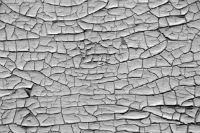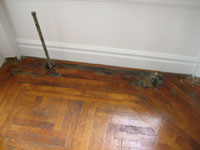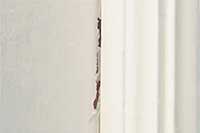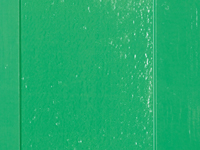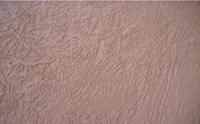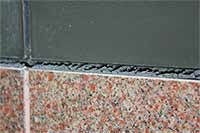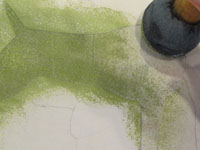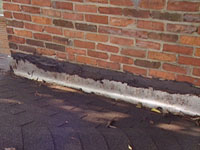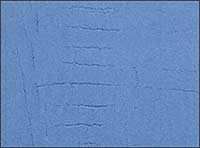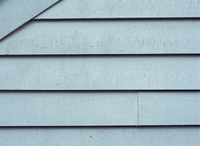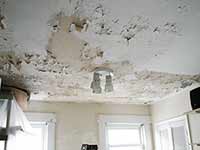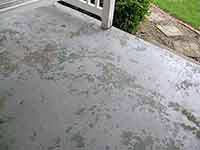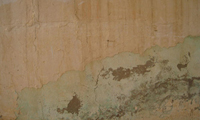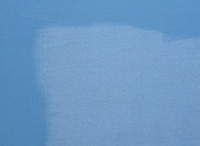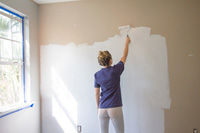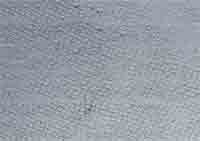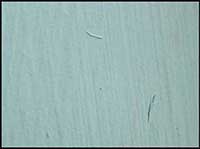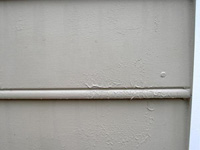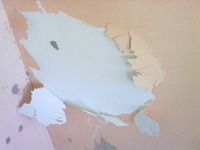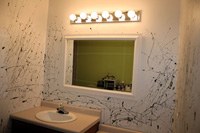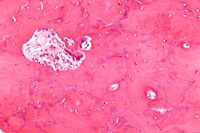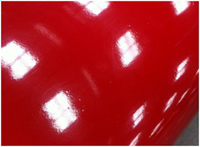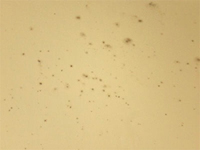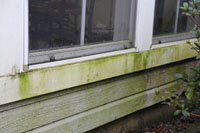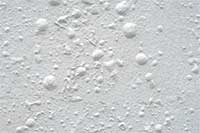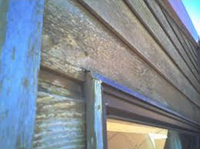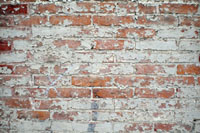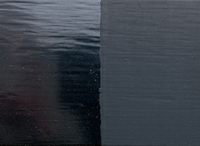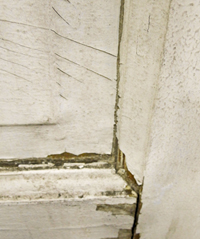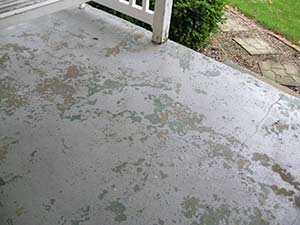 CAUSES: Hardeners added to concrete often will prevent good adhesion. Also, concrete contains alkali which are drawn to the surfaces by water and deposited there. When the water evaporates, the alkali leave a crystallized substance called efflorescence which pushes against the paint film and causes peeling.
CAUSES: Hardeners added to concrete often will prevent good adhesion. Also, concrete contains alkali which are drawn to the surfaces by water and deposited there. When the water evaporates, the alkali leave a crystallized substance called efflorescence which pushes against the paint film and causes peeling.
An additional problem with concrete is that grease, oil, wax and dirt tend to soak in and are difficult to remove. If they are present when the floor is being painted, they can cause peeling.
Moisture seeping through concrete floors in basements contributing to peeling paint. And floor that are laid on-grade, without a moisture barrier, do not hold paint well.
If a concrete floor is old, it could crumble, bringing the paint film with it. And finally, peeling from concrete also can occur when an alkyd or oil base floor finish is applied to a bare, unetched, uncured concrete floor. When alkyd resins contained in floor coating come in contact with the alkaline concrete surfaces, they combine, react with one another, and form a soap film between the concrete surface and the alkyd coating. This reaction is called saponification and results in extremely poor adhesion and softness of the alkyd coating.
SOLUTION: First remove the paint by scraping and, if necessary, use chemical strippers. To clean the floor, scrub with hot water and a strong detergent solution. Avaoid mild dishwashing detergent; they contain skin softening ingredients which interfere with paint adhesion, rinse thoroughly. Allow the surface to dry for several days. Stubborn grease may continue to rise to the surface, and in that case, you may have to scrub again. Once the floor is clean, mop on a 10% solution of muriatic acid and water. (ALWAYS MIX THE ACID INTO THE WATER NOT THE WATER INTO THE ACID). When painting with a water-thinned coating, use a 1% solution of phosphoric acid instead of muriatic. Allow the solution to remain on the surface for 10-15 minutes until all bubbling ceases, flush the surface with clean water and allow it to dry completely. It’s advisable to wear protective goggles, boots and rubber gloves during this orocess, which is called etching. When the floor is properly etched, it should resemble the texture of fine sandpaper. Etching neutralizes the surfaces and provides a better bond.
It might help to apply an alkali-resistant primer before repainting. If the concrete is loose, sand off any crumbly areas. Repaint. Latex floor enamels may stay on successfully. Acid-etching with a 10% solution of muriatic acid and water also halts saponification. Follow the previously mentioned washing instructions. Acid-etching not only cleanses the surfaces of efflorescence, but it also helps remove latency in the concrete and balances the pH of the surface.
